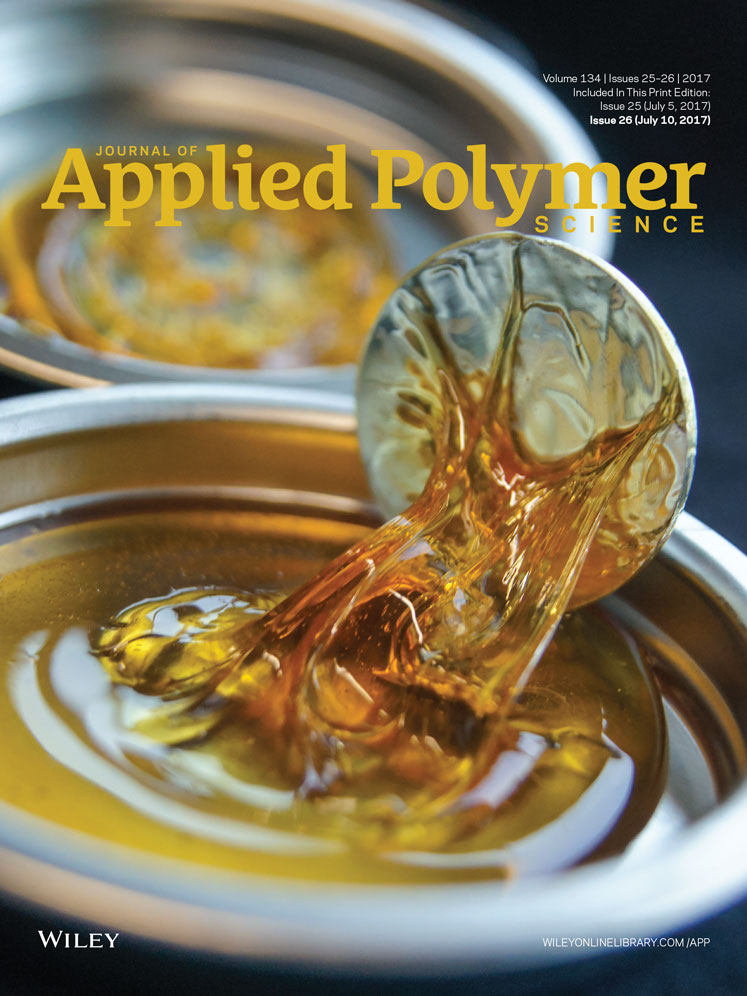Poly(urethane acrylate)-based gel polymer films for mechanically stable, transparent, and highly conductive polymer electrolyte applications
ABSTRACT
Polymer electrolytes are attractive for the applications in conventional electrochemical devices and emerging flexible devices. In this study, we developed a poly(urethane acrylate)-based gel polymer electrolyte with excellent mechanical stability, optical transparency, and a high ionic conductivity. These polymer electrolytes showed excellent dimensional stability and an elastomer-like behavior with a Shore A hardness in the range of 20–40. The optical transmittance values of these polymers films were over 80% in the visible range. Their ionic conductivities were controlled via changes in the concentration of the linker, dimethylol propionic acid (DMPA), and the lithium salt incorporated into the polymer. The maximum ionic conductivity reached 3.7 mS/cm at room temperature (∼23 °C) when the DMPA/poly(ethylene glycol) molar ratio was 0.25, and the ionic conductivity was found to be proportional to the salt concentration. We believe that these polymer electrolytes will be useful in various electrochemical applications where flexibility, high ionic conductivity, and transparency in the electrolytes are necessary. © 2017 Wiley Periodicals, Inc. J. Appl. Polym. Sci. 2017, 134, 45009.




